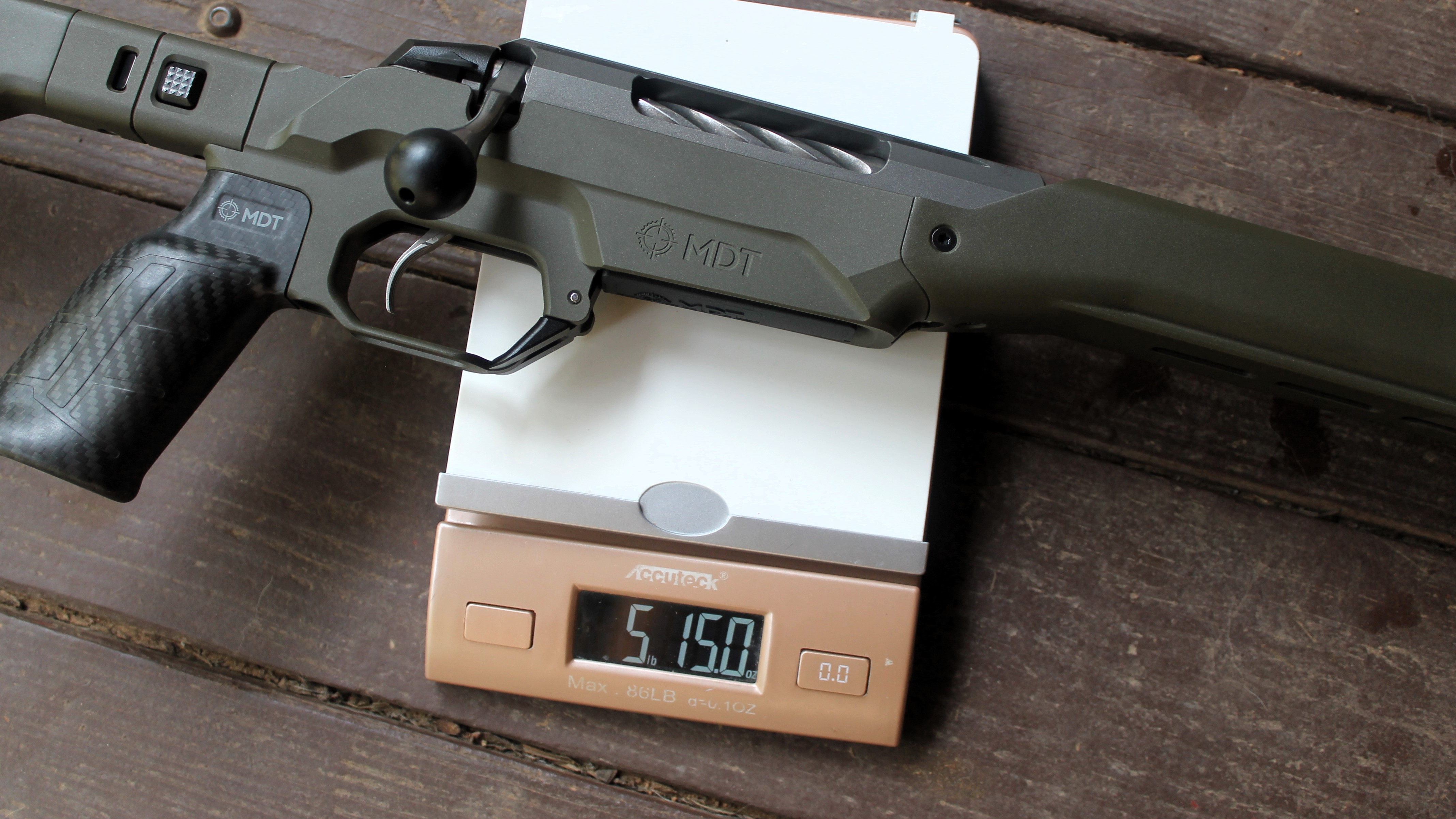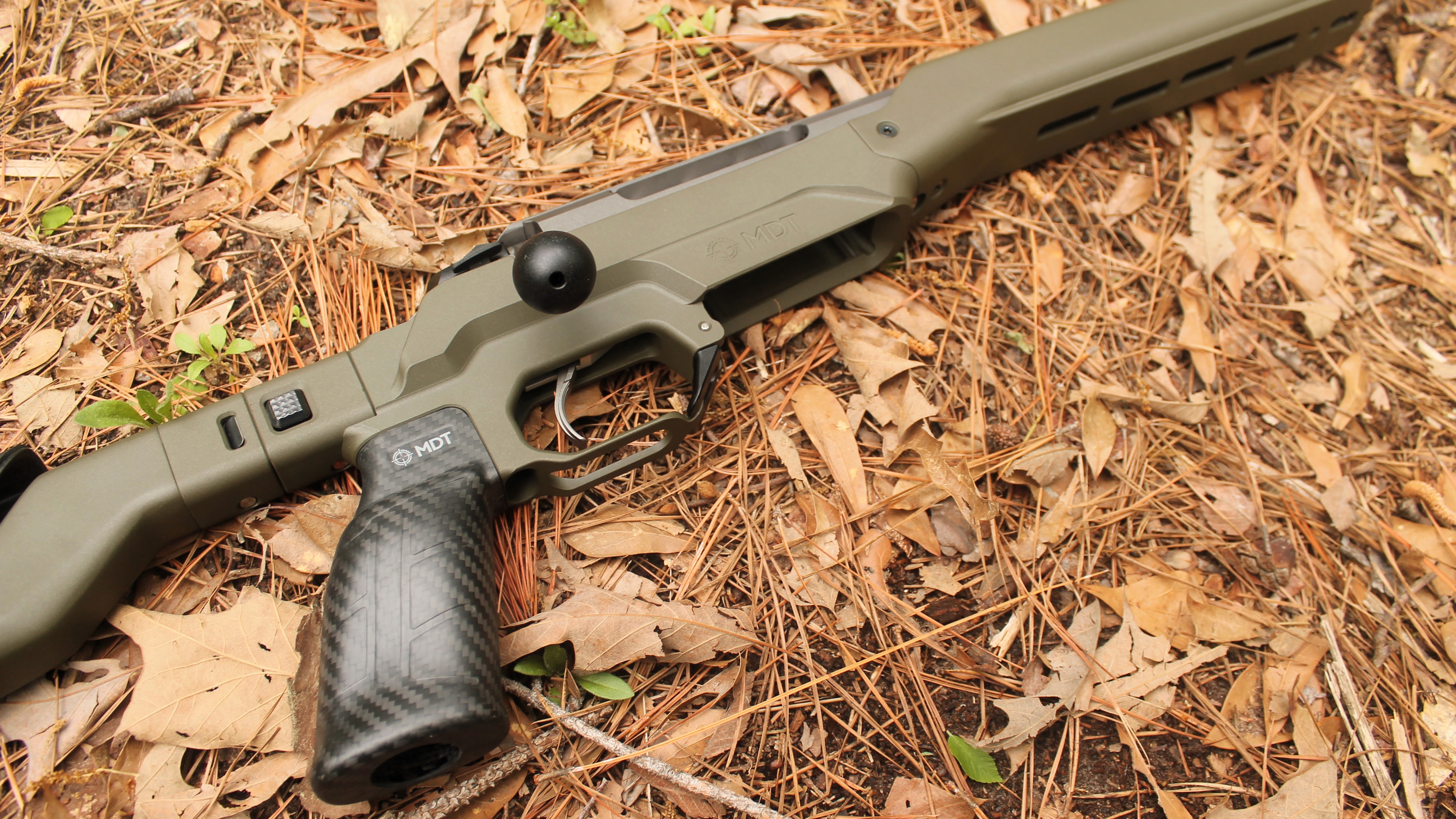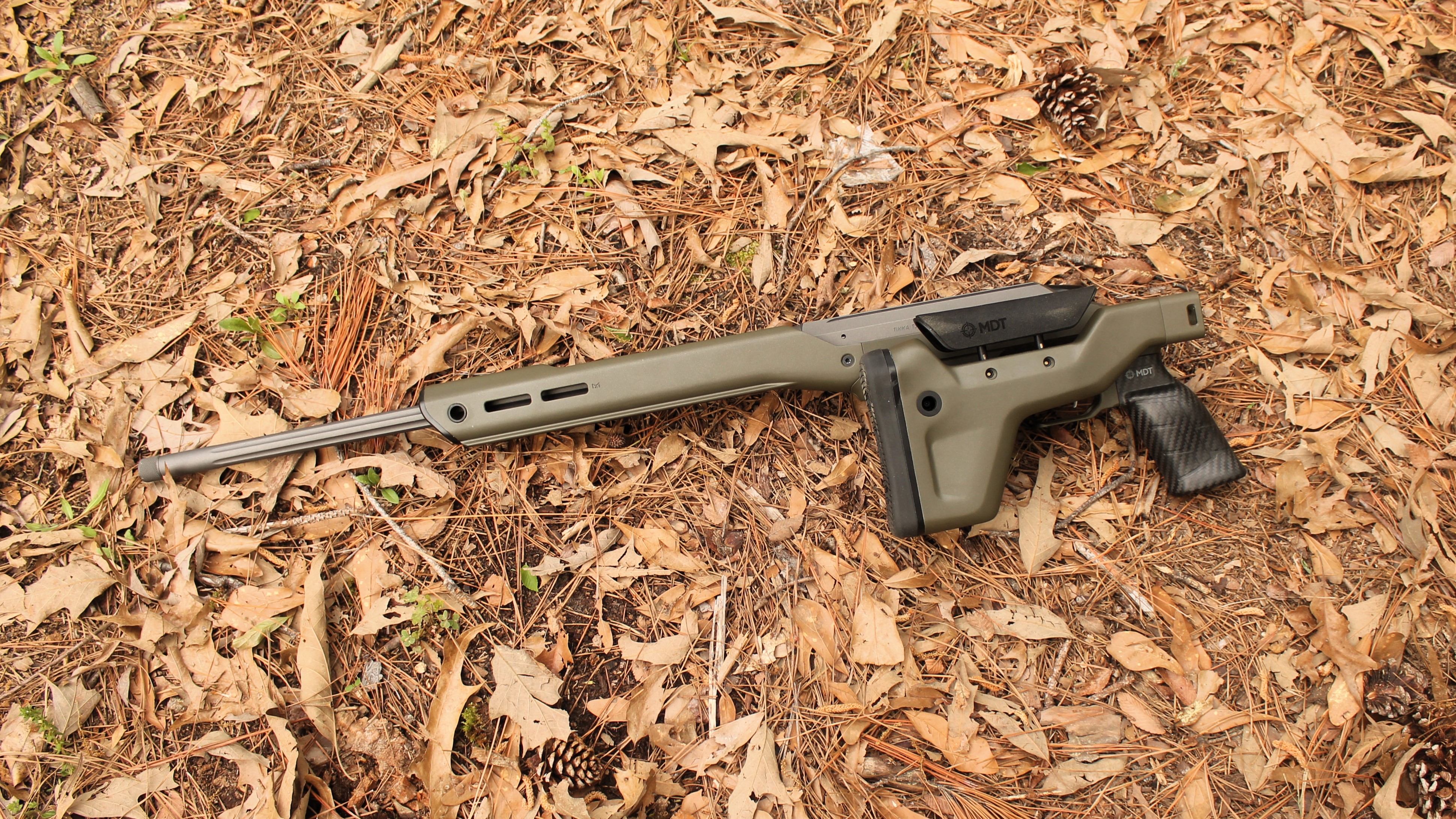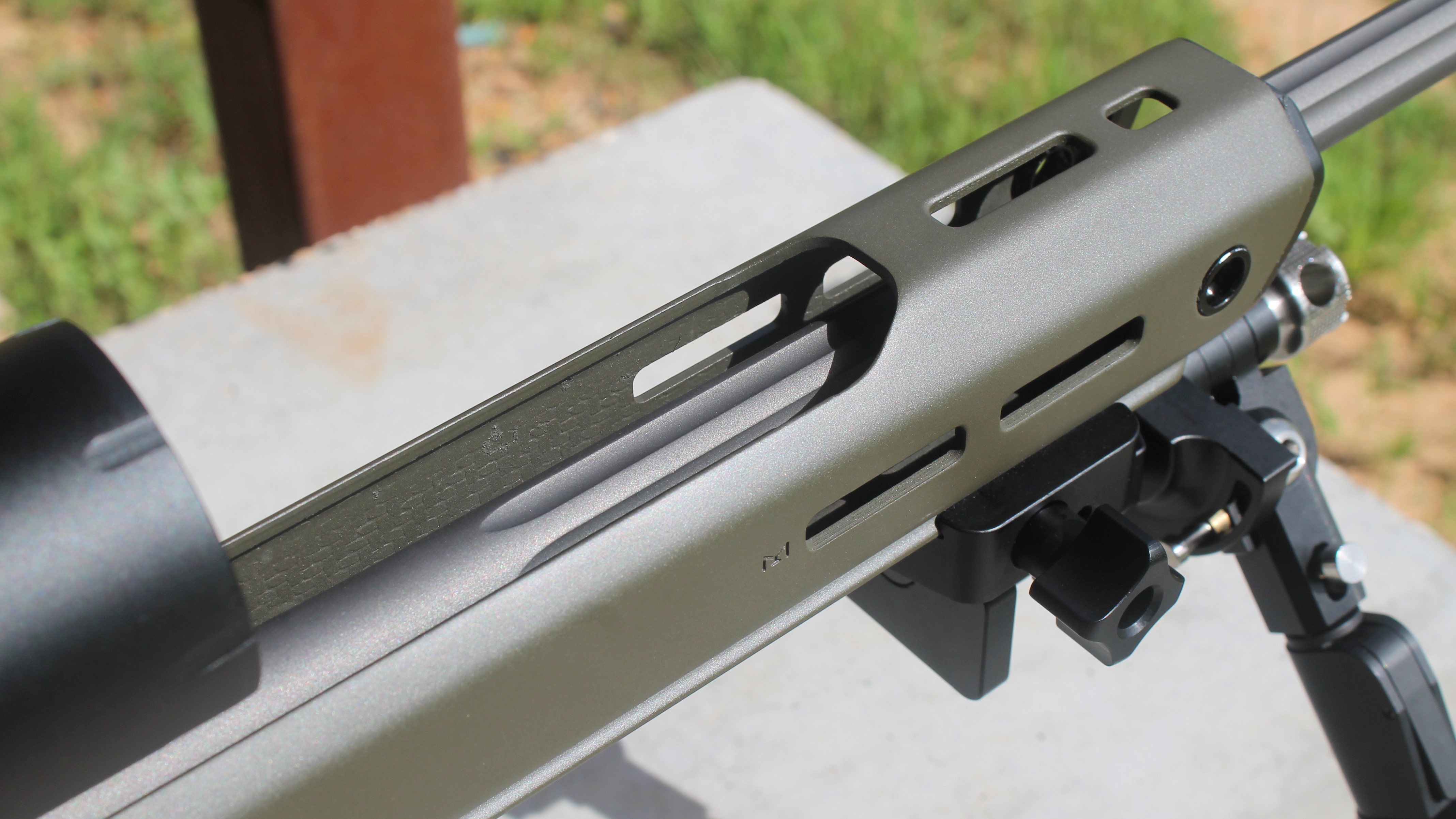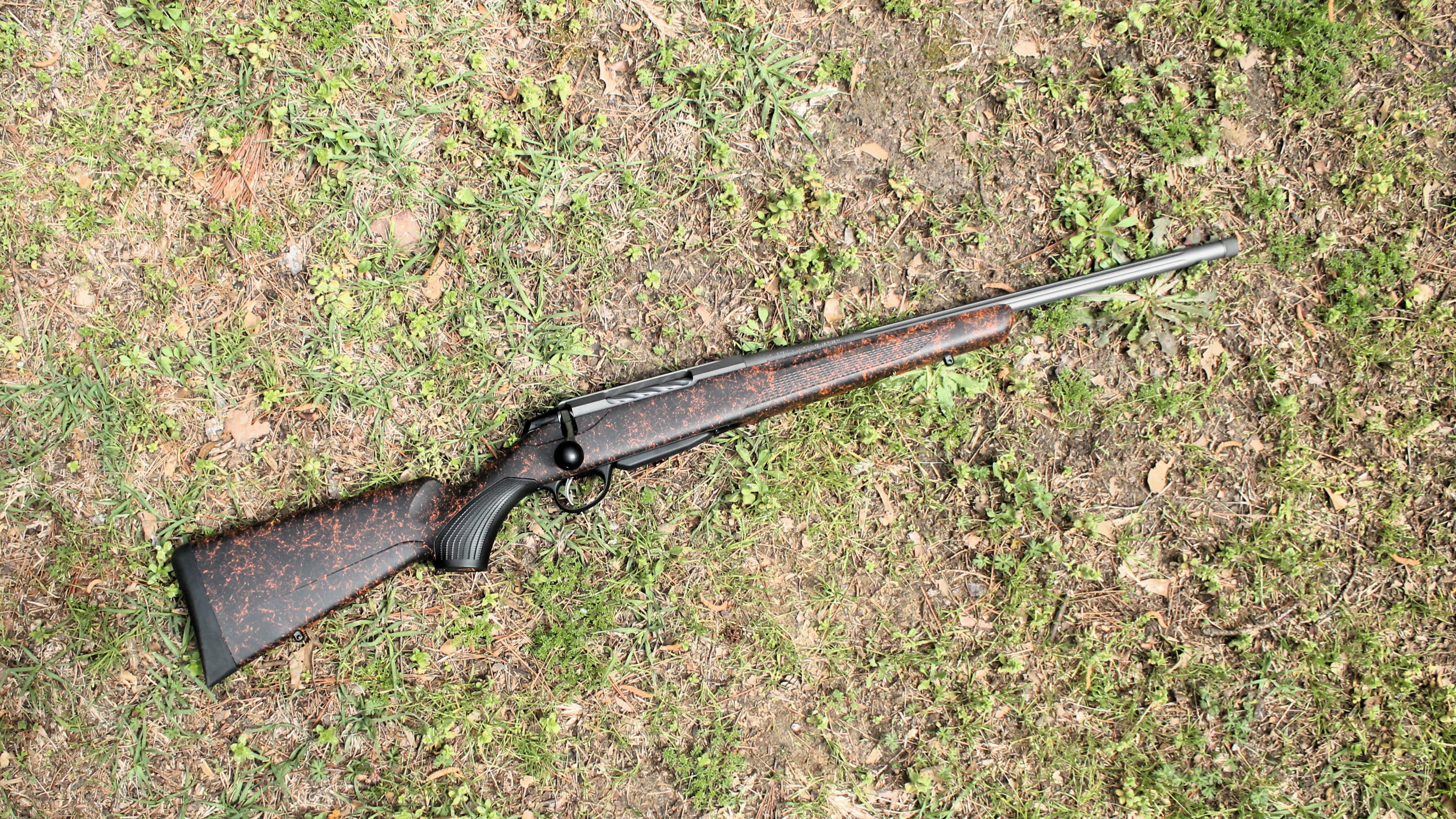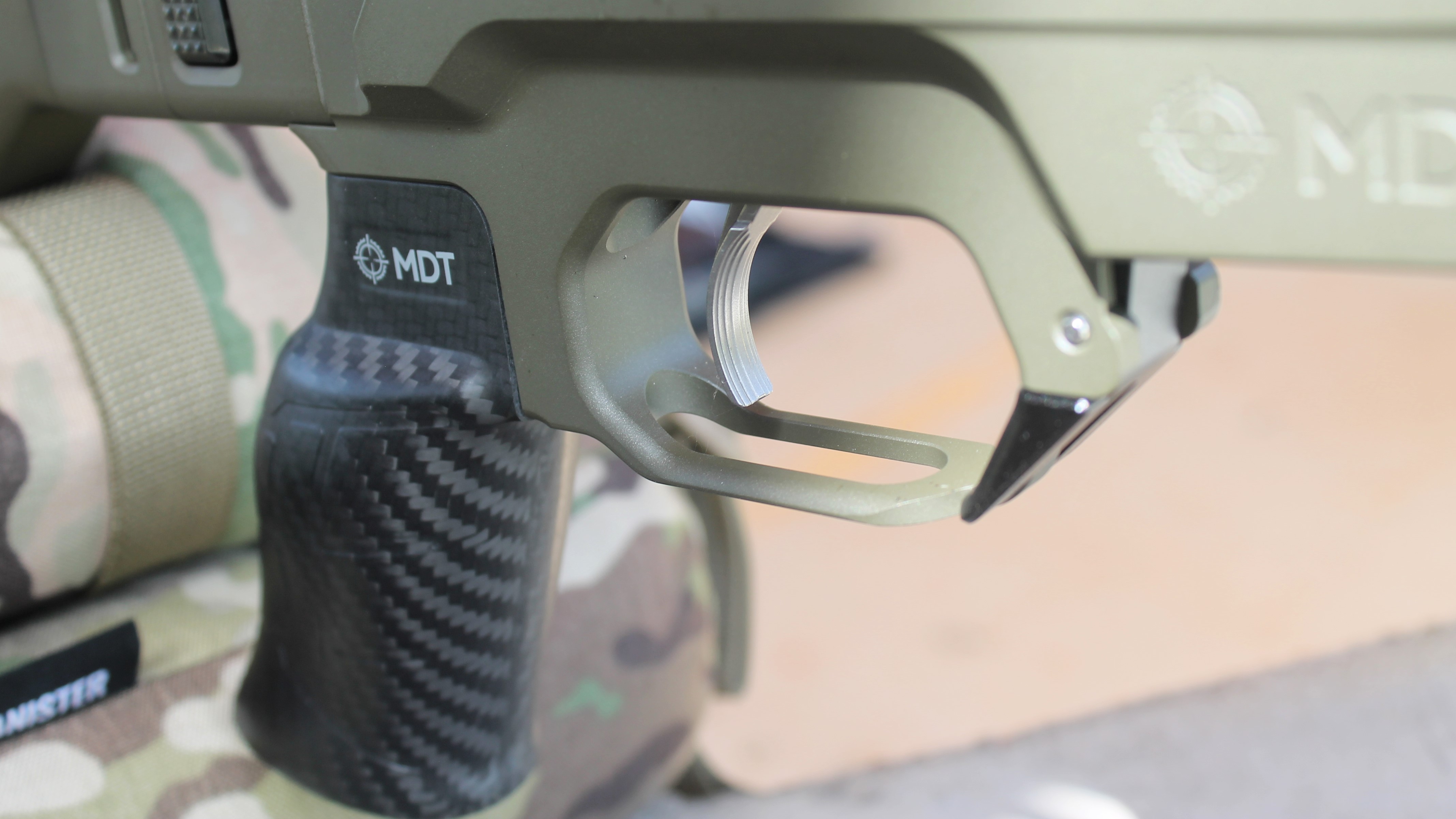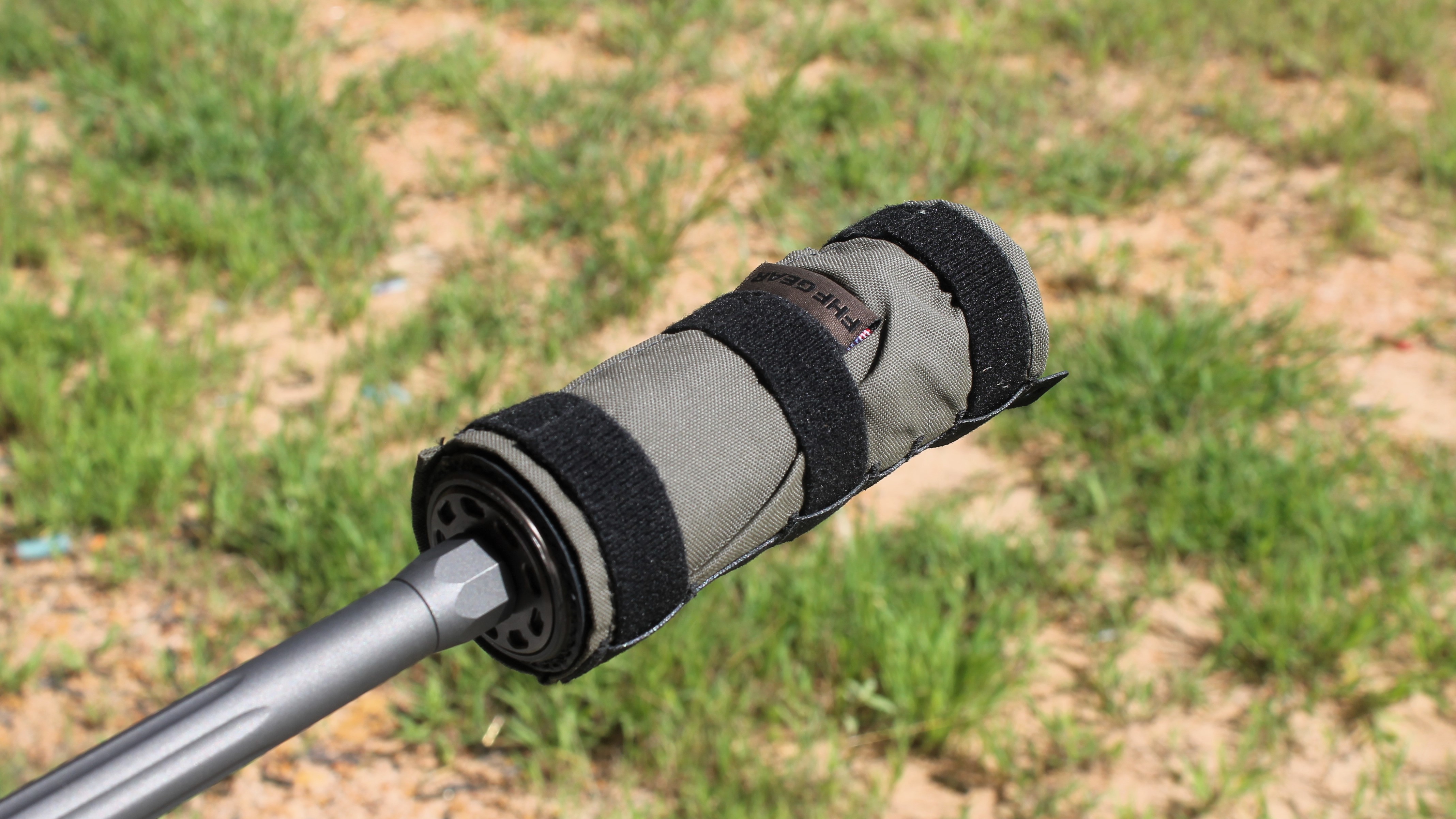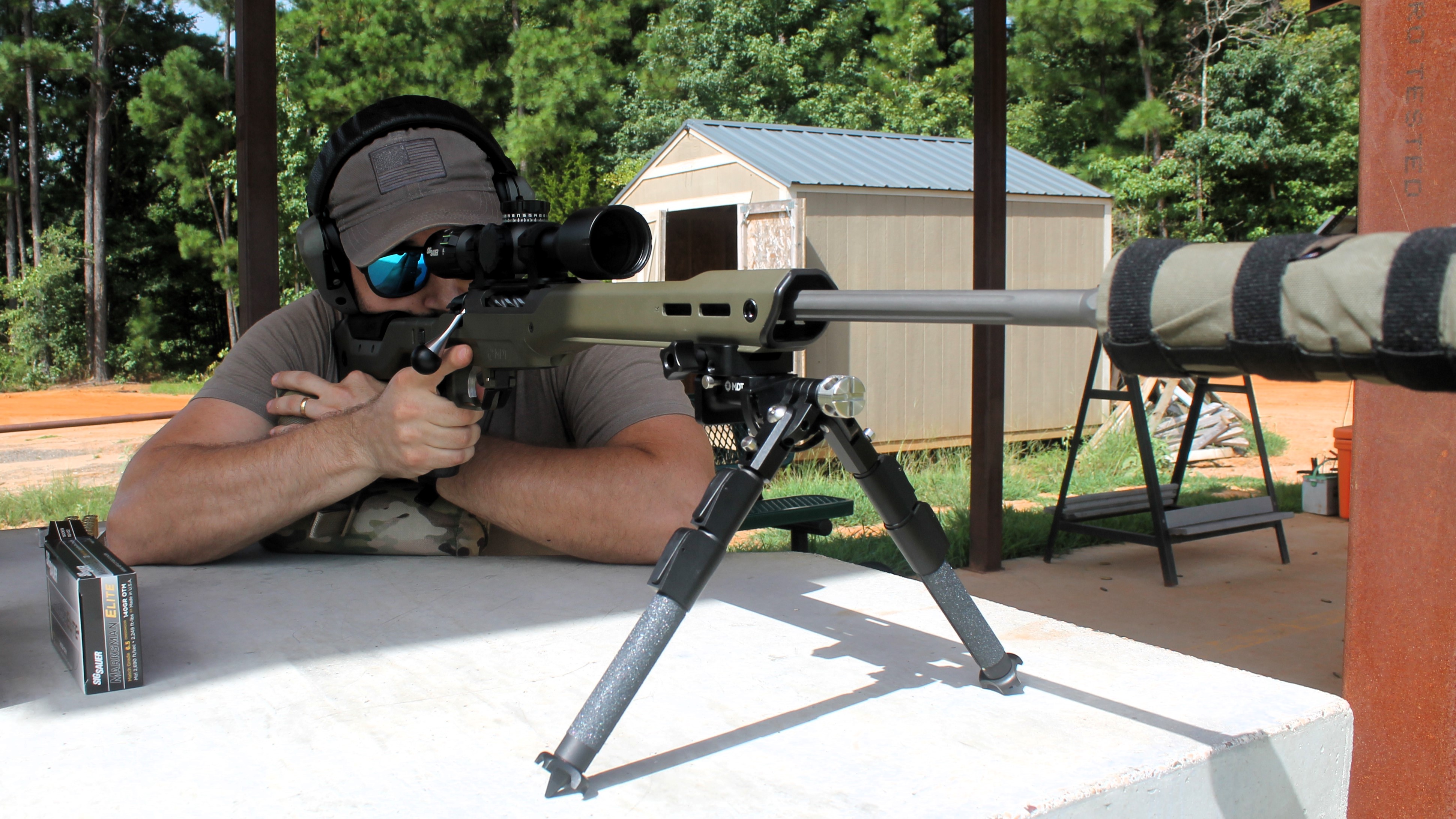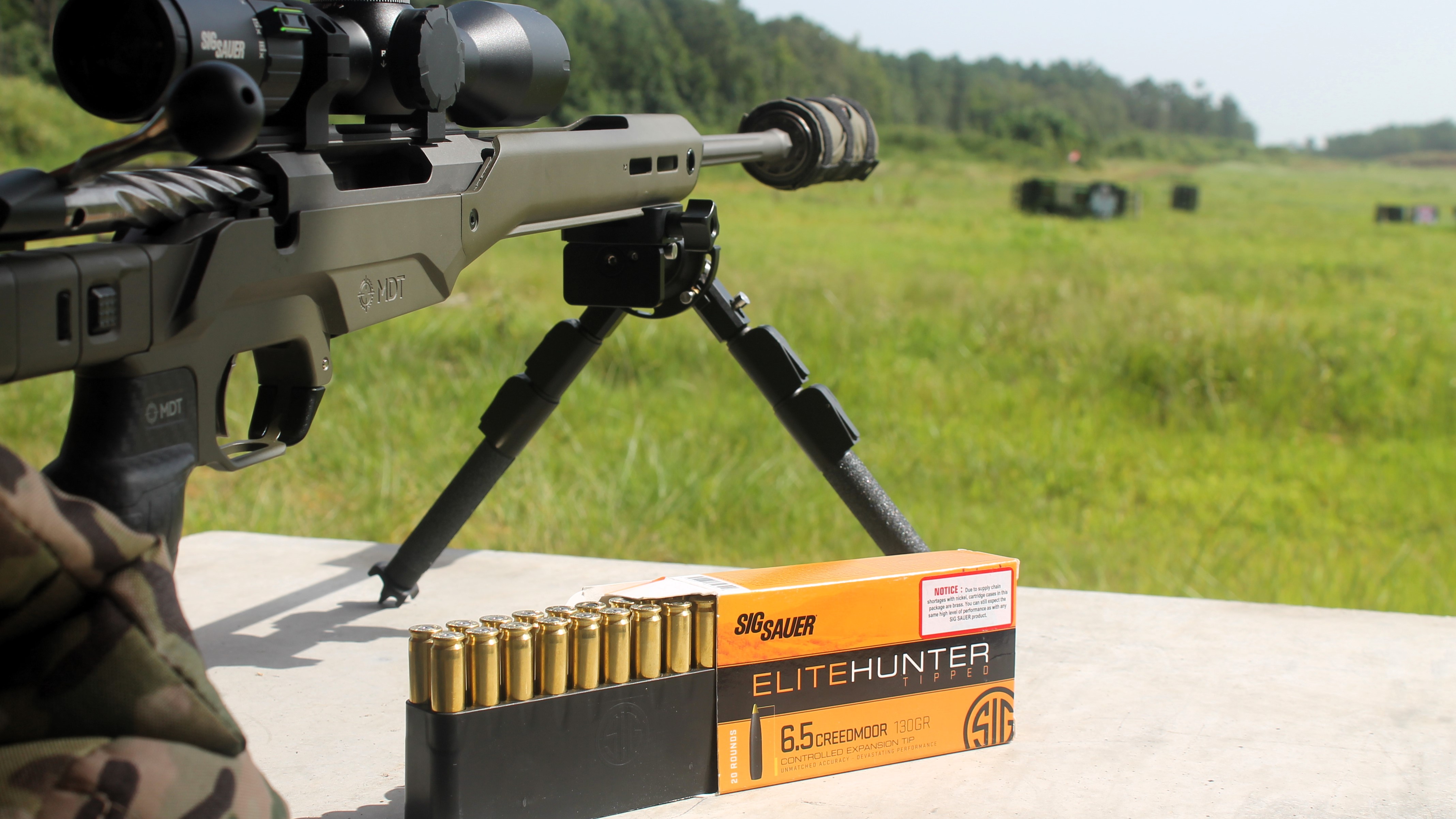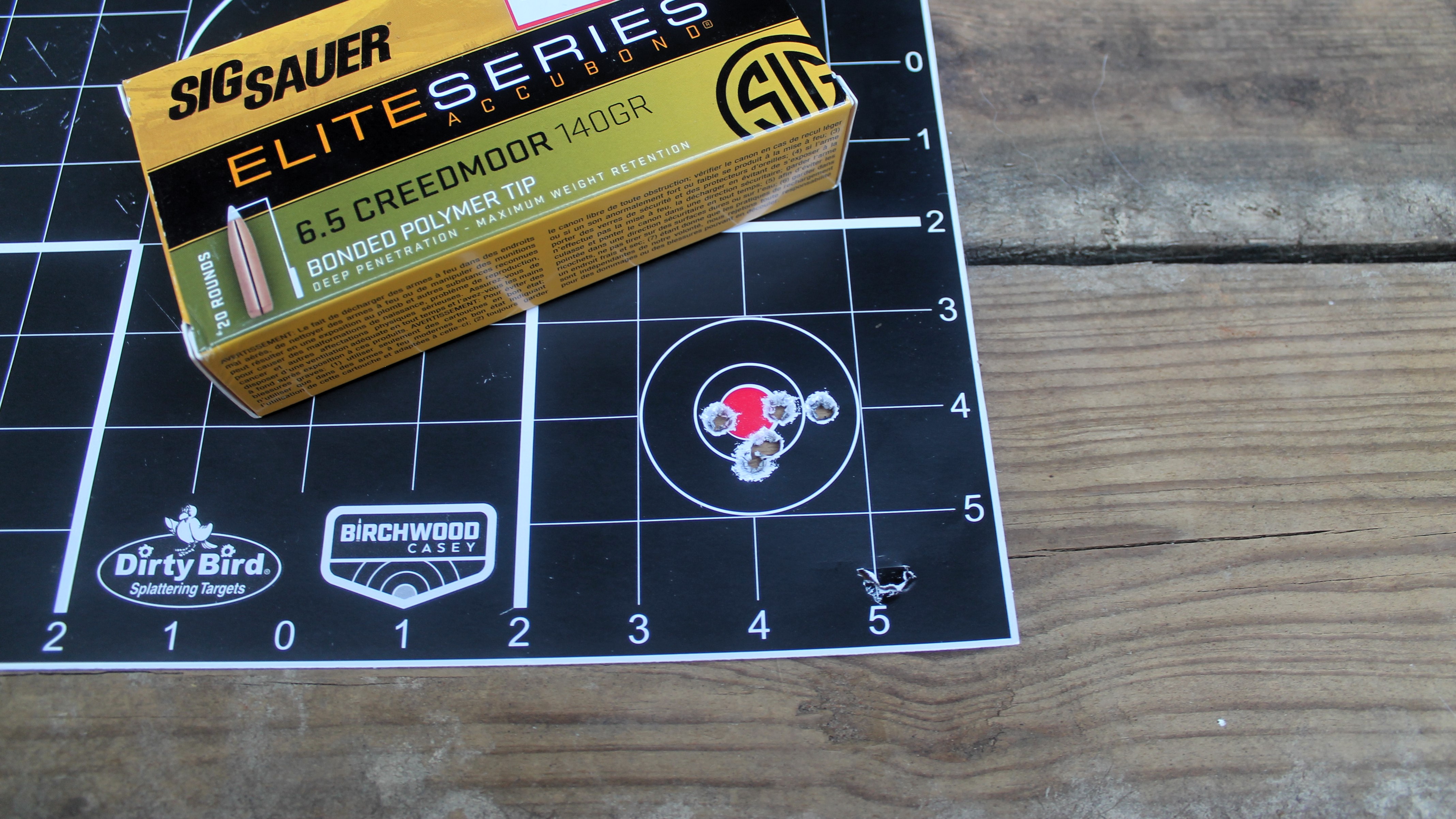Like most things concocted by marketing departments and gun magazines, the “mountain rifle” concept is part useful, part BS.
It’s BS because you don’t need a different rifle to hunt in the mountains (or the woods or the plains or Michigan’s Upper Peninsula). You can use the same long gun wherever you are, provided you have the skills necessary to get within a few hundred yards of your quarry.
At the same time, any backpack hunter will tell you that if you need to carry food, water, and gear for eight days in the mountains, each piece of kit should be as light as possible. That’s where the “mountain rifle” concept can be useful. It’s shorthand for an extremely lightweight rifle that’s also compact enough to strap to a backpack and carry up and down a mountain for a week at a time.
If that’s what you’re looking for, this might be your answer. Tikka’s line of T3x Lite rifles are high-value firearms by themselves. But when paired with MDT’s HNT26 stock, we can throw around a term like “ultimate mountain rifle,” and it actually starts making sense.

Features and Specs
Weight (unloaded, no scope): 5 lbs, 15 ounces
Overall Length, Unfolded: 39.25”
Overall Length, Folded: 30”
Approximate Retail Price: Rifle: $1,300 | Chassis: $1,400-$1,600
Click here for more info.
Weight Watchers
No international body controls when a rifle is considered “ultralight,” but sub-six-pound rifles are rare enough that I think they deserve that moniker. At 5 pounds, 15 ounces, this rifle sneaks in under that bar–and it shows. I’ve enjoyed putting this gun in the hands of friends and family and watching their eyes get big as they rock the gun in one hand like a cornhole player about to make a throw. “Wow, that is light,” they usually say.
However, as I’ve said elsewhere, how a gun shaves the pounds is just as important as the final product. Any gun can become “ultralight” by shortening the barrel, skeletonizing the stock, and otherwise cutting material that may or may not be important. But a short barrel reduces bullet velocity, a minimalist stock sacrifices comfort, and losing material from the action can be unsafe.
A better solution is to strike a balance between weight and function. In this case, Tikka lightens the T3x by using a slim profile barrel, fluting the barrel and bolt, and cutting down the barrel to 20 inches. As you can see from the average velocities listed below, this does reduce bullet velocity. I’ve shot this same 6.5 Creedmoor ammunition from a 22-inch barrel, and those extra two inches add between 70 and 100 fps to all four loads. That’s only 2-4% more velocity, which won’t make much difference at the majority of hunting distances.
Still, a 140-grain 6.5mm bullet traveling 2,600 fps at the muzzle drops about 62 inches at 500 yards while the same bullet moving 2,700 fps only drops about 57 inches. Though still a makeable shot, that’s enough movement to shift the point of impact outside the vital area. The faster bullet also shifts about an inch less at that distance with a 10 mph crosswind.
Whether this makes the slightest bit of difference to you depends on how you hunt, where you hunt, and how comfortable you are taking a shot at that range. But you should be aware that a shorter barrel does have drawbacks, even if they’re hundreds of yards downrange.
The stock is the other major place a firearm can go on a diet. These days, most gun companies reach for carbon fiber when they want to create a lightweight stock, but MDT’s HNT26 is a little different. Though it uses carbon fiber in the forend, pistol grip, and buttstock, the heart of the chassis system is constructed from a magnesium alloy. This gives the stock the rigidity and durability of a metal chassis while maintaining its slim, 26-ounce fighting weight.
What’s more, the HNT26 isn’t just another metal skeleton–meaning, it doesn’t throw comfort to the wind in an effort to shave pounds. It includes an adjustable cheek riser, a swelled pistol grip, and a substantial recoil pad. MDT also offers the HNT26 in a folding stock model. This mechanism adds about five ounces to the chassis, but it allows the overall length to be reduced by about nine inches. This is especially handy for packing up and around the mountains, but it can be deployed quickly with the push of a single button.
Eagle-eyed readers will notice the sponsor of this here gun review and might be tempted to roll said eyes. It’s a fair point, and there isn’t really any way to prove objectivity from this side of a computer screen. All I can say is, you don’t have to take my word for it. Check out the HNT26 chassis for yourself. The good folks at MDT accept returns if you don’t like it.
But even if it’s more than you want to spend on a chassis, it’s hard to deny that it’s a feature rich product. MDT designed it not just to save weight but to be actually useful in the field: the integrated ARCA rail makes shooting from a bipod a seamless endeavor; the M-LOK enclosed forend allows for easy attachment of rails, bipods, and other accessories; and the ACIS magazine compatibility means finding a magazine is a piece of cake.
It’s a thoughtfully designed, high-quality product, and we wouldn’t recommend it otherwise. That being said, there’s no getting around the fact that, in this case, the stock costs more than the rifle, and the complete build is pushing $3,000. That’s a lot of cheddar for a little rifle. The HNT26 comes with tons of features not included in the factory stock, and it likely improves accuracy, but the non-foldable version only shaves about 6.5 ounces from the rifle’s overall weight. Whether those features and weight savings are worth it is a personal decision that, honestly, I can see going either way.
High-Value Rifle
The good news is that you don’t have to drop an extra $1,400 to get a quality rifle. You can find a Tikka T3x Lite for less than $1,000 and this particular model (Roughtech Ember) runs about $1,300 at the gun store. That’s more than budget-friendly firearms, but it’s attainable for most hunters.
Unlike the HNT26, the T3x Lite is a no-frills situation. The stock has some nice texturing on the forend and the grip, a detachable three-round magazine, and a hefty recoil pad. I also like the swelled pistol grip. But at heart it’s a simple polymer stock, and it doesn’t include any kind of metal bedding fixtures. The barreled action is simply torqued into the polymer, though it does feature a metal recoil block.
The trigger on the barreled action is crisp and consistent (as most triggers seem to be these days), and mine came from the factory set at three pounds. But it can be adjusted between 2.5 and 4 pounds using a set screw located on the front of the mechanism. This allows it to be adjusted with a 2.5mm Allen key by removing the magazine but without removing the barreled action from the stock.
I also appreciate that the gun comes standard with a muzzle thread adapter to convert the existing 1/2×28 thread pitch to 5/8×24. The problem with slim profile barrels is that there isn’t enough material to accommodate the larger threads. But most suppressors and muzzle devices designed for a 6.5mm or .30-caliber bullet use 5/8×24. The best solution is to find a suppressor mounting system or muzzle device that uses 1/2×28, but a thread adapter is the next best thing. On this Tikka rifle, you don’t have to find one somewhere else, which is handy.

At the Range
Tikka rifles have earned a solid reputation, so I was curious to see how this one would shoot with MDT’s chassis. Specifically, I was interested in two things: comfort and accuracy.
Lightweight rifles always come with a cost to your shoulder, and the lighter the rifle, the sharper the recoil impulse. Even with a famously moderate cartridge like the 6.5 Creedmoor, I expected to come home with some bruising after a long day of accuracy testing.
I was surprised to discover that this featherweight rifle is still pleasant to shoot. I shot both suppressed and unsuppressed, and even with a bare muzzle the rifle didn’t feel much worse than shooting a rifle of more median weight. Part of that is due to the Creed’s inherent shootability, but the stock also keeps things comfortable. The carbon fiber buttstock is filled with foam, which, according to MDT, helps to dampen vibration and felt recoil.
I’ve had no trouble during long range sessions, and I even had my eight-year-old son ringing steel with a SilencerCo Scythe Ti on the end of the rifle. He’s only shot large-caliber rifles a handful of times, but it was all smiles after getting behind this “mountain rifle.”
Of course, there’s not much point going on a once-in-a-lifetime high-mountain hunt if you can’t hit your target at the moment of truth. Lightweight rifles aren’t known for dead-nuts accuracy, but this setup performs well.
I tested three kinds of hunting ammunition and one match-grade option, all from 100 yards using an MDT CKYE-POD and bags. I shot five, five-shot groups with each ammunition type, and the barrel was allowed to cool between groups. Velocities were recorded using a Garmin Xero C1 Pro chronograph.
| Ammo | 130g Expanding Tip | 140g Open Tip Match | 129g Venari Soft Point | 140g Accubond |
|---|---|---|---|---|
| Average Group (in) | 0.98 | 1.08 | 1.5 | 0.9 |
| Small Group (in) | 0.8 | 0.6 | 1.1 | 0.8 |
| Average Velocity (fps) | 2715 | 2626 | 2646 | 2575 |
These five-shot group sizes are typical of a lightweight hunting rig, though the gun is certainly capable of sub-MOA accuracy. The 130g ET, 140g Accubond, and 140g OTM, all posted several groups under one inch, but the averages all hovered around one inch due to one or two groups with single “flyers.” Take that how you will, but I think it’s worth mentioning.
Also worth mentioning: the lightweight barrel handles heat pretty well. Sometimes, a gun will start throwing flyers as the barrel heats up on the fourth or five shots. But I didn’t notice that phenomenon here.
I did notice group sizes expand as the barrel became dirty. Some barrels are more sensitive to carbon buildup than others, so I cleaned the gun halfway through accuracy testing. Those initial five or six groups after cleaning were my smallest, which is good news for hunters. This gun isn’t designed for a full day of competition, but it performs its best on those first few shots when it matters most in the field.
Last Shot
Do you need a “mountain rifle” to be successful on your next mountain hunt? I know a few jeans-wearing, wood stock rifle-toting good ol’ boys who prove that the answer is “no.” Never let anyone tell you that you need a fancy, expensive rifle to get the job done–you don’t, and I’m doing you any favors by pretending otherwise.
That being said, if you have the resources, if you’re looking to give yourself an edge, if you want a lightweight, high-quality firearm that performs when you need it and can survive in the worst elements, the Tikka T3x is a solid contender. MDT makes the HNT26 chassis for a variety of rifles, but the Tikka is a great bang for your buck, and the chassis elevates that no-frills firearms to the next level.
Read the full article here


